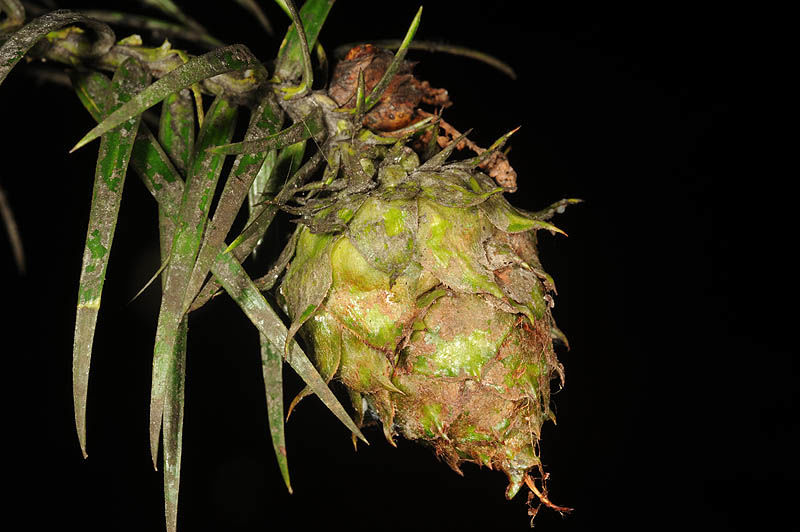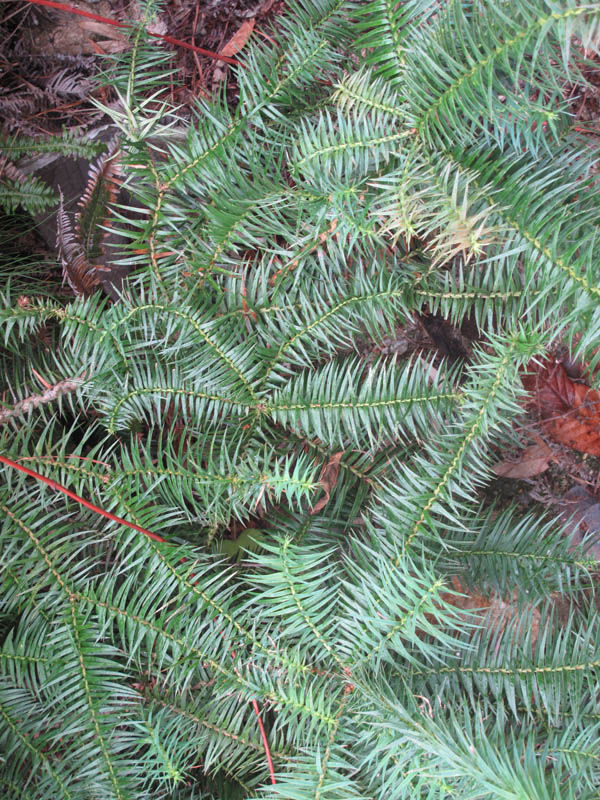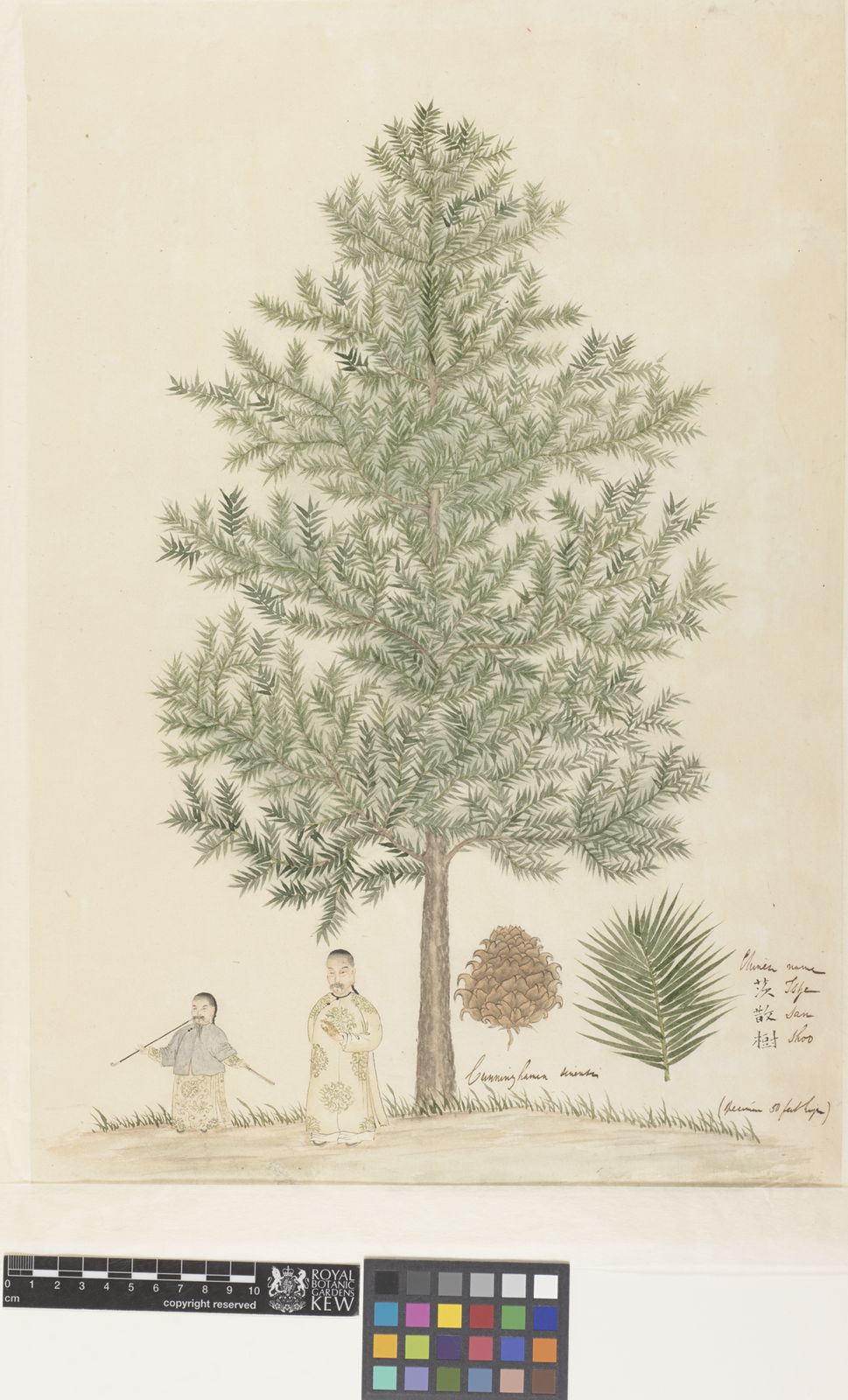Family: Cupressaceae
Author: (Lamb.) Hook.
Bibliography: Bot. Mag. 54: t. 2743 (1827)
Year: 1827
Status: accepted
Rank: species
Genus: Cunninghamia
Vegetable: False
Observations: S. China
Description
The Chinese-fir, scientifically known as Cunninghamia lanceolata, is a remarkable and visually striking tree that hails from South China. It belongs to the Cupressaceae family, a group renowned for their evergreen nature and often significant economic and ecological value. This distinguished tree was first recorded in botanical literature in 1827, as documented in the Bot. Mag. under the stewardship of (Lamb.) Hook.
The Chinese-fir is easily identified by its tall, straight trunk and lush, needle-like foliage, which gives it a dense and graceful appearance. This tree has adapted well to the climatic conditions of its native region, thriving in the subtropical zones of South China. It plays a vital role in local forestry due to its continuous growth and the quality of its timber.
The wood of the Chinese-fir is highly valued for its durability and fine grain, making it a preferred material for construction, furniture, and various other woodworking projects. Beyond its utilitarian purposes, the Chinese-fir also holds cultural significance in Chinese history, often being associated with resilience and longevity, much like other coniferous trees.
Ecologically, the Chinese-fir contributes substantially to the forest ecosystems where it resides. Its dense canopy provides shelter for various species of birds and small mammals, while its roots help prevent soil erosion, maintaining the health of the forest floor. Furthermore, its needle-like leaves play a role in the carbon sequestration process, helping to mitigate the effects of climate change.
Overall, Cunninghamia lanceolata, or the Chinese-fir, is not only an important economic resource but also a symbol of natural beauty and ecological balance in its native habitat of South China.
Common Names
Ita: abete della cina
Eng: china-fir, chinese fir, chinese-fir
Deu: chinesische zwittertanne
Hun: kínai csodafenyo
Por: cuningâmia, cunninghamia, pinheiro-alemão, pinheiro-chinês, pinhão-chinês, árvore-do-natal
Swe: mandaringran
Fra: sapin de chine
Rus: куннингэмия ланцетная (kunningehmiya lancetnaya)
Zho: 广叶杉 (guang ye shan), 杉木 (shan mu), 白衫 (bai shan), 赤衫 (chi shan), shan mu
En: Chinese-fir, China-fir, Chinese fir, Cunninghamia
Az: Neştəryarpaqlı kunninqamiya
Zh: Shan mu, 杉木, 杉木属, 广叶杉 (guang ye shan), 杉木 (shan mu), 白衫 (bai shan), 赤衫 (chi shan)
Cs: Ostrolistec kopinatý
Da: Kinesisk ligkistetræ
Fi: Kiinankeihäskuusi
Fr: Sapin de Chine
De: Spießtanne, Chinesische Zwittertanne
Hu: Kínai szúrósfenyő, Kínai csodafenyo
It: Abete della Cina
Kv: Куннингамия
Pl: Stroigła chińska
Pt: Cuningâmia, Cunninghamia, Pinheiro-alemão, Pinheiro-chinês, Pinhão-chinês, Árvore-do-natal, China fir
Ru: Кунингамия ланцетовидная, Куннингэмия ланцетная (kunningehmiya lancetnaya)
Sk: Ostrolistec čínsky
Sv: Mandaringran
Zh-tw: 杉木
Zh-hant: 杉木
Tr: Çin tırpan ağacı
Vi: Chi Sa mộc
Za: Faexsamoeg
Synonyms
- Larix chinensis (Mill.)
- Pinus abies (Lour.)
- Abies batavorum (Siebold ex Carrière)
- Cunninghamia sinensis (Rich.)
- Abies lanceolata ((Lamb.) Poir.)
- Raxopitys cunninghamii (J.Nelson)
- Belis lanceolata ((Lamb.) Hoffmanns.)
- Cunninghamia unicanaliculata var. pyramidalis (D.Y.Wang & H.L.Liu)
- Pinus chinensis ((Mill.) Münchh.)
- Pinus lanceolata (Lamb.)
- Cunninghamia jaculifolia (Druce)
- Cunninghamia lanceolata var. unicanaliculata ((D.Y.Wang & H.L.Liu) Silba)
- Cunninghamia sinensis var. prolifera (Lemée & H.Lév.)
- Belis jaculifolia (Salisb.)
- Cunninghamia unicanaliculata (D.Y.Wang & H.L.Liu)
Distribution
- China South-Central (native)
- China Southeast (native)
- Cambodia (introduced)
- China North-Central (introduced)
- Hainan (introduced)
- Korea (introduced)
- Laos (introduced)
- Qinghai (introduced)
- St.Helena (introduced)
- Vietnam (introduced)
Additional Images
Bark
Taken Sep 29, 2021 by Trap Hers (cc-by-sa)
Taken Jul 26, 2022 by Kai Best (cc-by-sa)
Taken Mar 13, 2020 by Ahmed Ghedjatti (cc-by-sa)
Taken Jul 17, 2021 by Robin N (cc-by-sa)
Taken Nov 16, 2021 by Francois Mansour (cc-by-sa)
Habit
Taken Nov 24, 2021 by Alain Bigou (cc-by-sa)
Taken Sep 30, 2022 by manuseitz (cc-by-sa)
Taken Mar 6, 2022 by Ha Anna (cc-by-sa)
Taken Nov 1, 2015 by Tela Botanica − Alain BIGOU (cc-by-sa)
Taken Jul 17, 2021 by Robin N (cc-by-sa)
Fruit
Taken Nov 24, 2021 by Alain Bigou (cc-by-sa)
Taken Jan 2, 2020 by Kampf Robert (cc-by-sa)
Taken May 15, 2020 by Tom Harris (cc-by-sa)
Taken Jul 17, 2021 by Robin N (cc-by-sa)
Taken Nov 16, 2021 by Francois Mansour (cc-by-sa)
Leaf
Taken May 19, 2014 by Andrzej Konstantynowicz (cc-by-sa)
Taken May 19, 2014 by Andrzej Konstantynowicz (cc-by-sa)
Taken May 19, 2014 by Andrzej Konstantynowicz (cc-by-sa)
Taken May 19, 2014 by Andrzej Konstantynowicz (cc-by-sa)
Taken Jul 17, 2021 by Robin N (cc-by-sa)
Other
Taken Sep 15, 2014 by Photoflora – Jean-Luc TASSET (©)
Taken Sep 15, 2014 by Photoflora – Jean-Luc TASSET (©)
Taken Sep 15, 2014 by Photoflora – Jean-Luc TASSET (©)
Taken Jan 26, 2022 by Tristan Jaton-Maria (cc-by-sa)
Taken Mar 13, 2020 by Ahmed Ghedjatti (cc-by-sa)
Flower
Taken Mar 6, 2022 by Ha Anna (cc-by-sa)
Taken Jan 9, 2015 by EOL − Dr. Nick V. Kurzenko (public)
Taken Mar 9, 2022 by Fabrice Rubio (cc-by-sa)
Taken Jun 24, 2022 by Marcela Marcela Escaramai da Silva (cc-by-sa)
Taken Jan 1, 1900 by EOL − Encyclopedia of Life (gpl)

© copyright of the Board of Trustees of the Royal Botanic Gardens, Kew.

© copyright of the Board of Trustees of the Royal Botanic Gardens, Kew.

© copyright of the Board of Trustees of the Royal Botanic Gardens, Kew.
Sources
- WFO (No URL)
- IPNI (No URL)
- GBIF (https://www.gbif.org/species/5284278)
- POWO (http://powo.science.kew.org/taxon/urn:lsid:ipni.org:names:676725-1)
- PlantNet (https://identify.plantnet.org/species/the-plant-list/Cunninghamia lanceolata (Lamb.) Hook.)
Specifications
Growth habit>: Tree






























